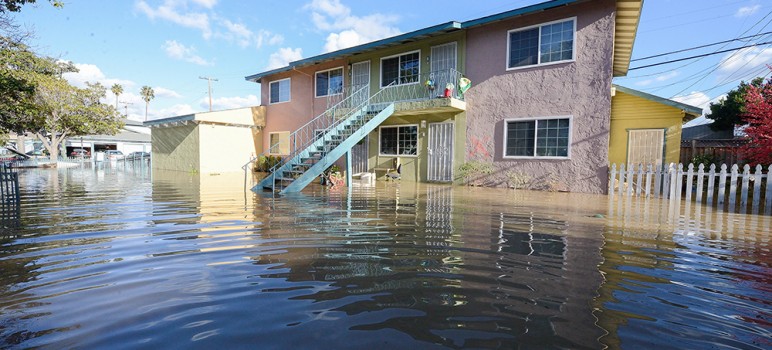As we observe the one year anniversary of the Coyote Creek flood in San Jose, our thoughts are with those impacted by last year’s relentless series of storms. Last winter, back-to-back atmospheric rivers unleashed a historic downpour on Santa Clara County in just a two-month period, saturating our watersheds, swelling our creeks and filling our reservoirs. By Feb. 21, 2017, downtown San Jose had received 14 inches of rain, or 114 percent of normal. One year later it could not be more opposite, with less than 5 inches of rain, or 51 percent of normal, as of Feb. 12.
It is precisely because of nature’s unpredictability that the Santa Clara Valley Water District believes investing in flood protection now is our community’s insurance policy for the future. In the last 12 months, the water district has taken great strides to reduce the risk of flooding in vulnerable communities along Coyote Creek.
Immediately after the flood, the board of directors reached out to federal and state representatives to tour the impacted area and convey the urgent need for a large-scale flood risk reduction project. Board members went to Washington, D.C. in the spring, where they identified an opportunity to work with the U.S. Army Corps of Engineers on a feasibility study; the Corps will provide technical assistance paid for by the district. We hope to soon initiate a study that would assess flood risks and potentially lead to a project that can be built with local, state and federal funding.
The Coyote Creek Flood Protection Project, part of the voter-approved Safe, Clean Water and Natural Flood Protection Program, is now in the planning phase. The board extended the proposed project by 2.9 miles to Tully Road and revised the target level of protection to a storm of similar magnitude to last winter’s, which was the largest flow seen in Coyote Creek since 1950.
While we continue to develop a long-term project, the water district began a series of short-term measures to reduce flood risks and prepare Coyote Creek for the upcoming winter. In the Rock Springs neighborhood, we were able to plan, design and build a temporary flood risk reduction project. Crews installed two flood barriers between the creek and the neighborhood to help prevent the intrusion of water from flood events similar to last year’s.
We installed new creek gauges and visible markers so we can better track rising creek levels. The city of San Jose allowed the water district access to city-owned property between Old Oakland Road and Tully Road to remove potential blockages. District crews removed up to 16 acres of the invasive giant reed, which can grow so thick it backs up creek flows. Crews also removed downed trees and repaired a levee by Old Oakland Road.
The water district also worked with the city of San Jose to develop an Emergency Action Plan to define a strategy for how the agencies prepare for, communicate and respond to flooding on Coyote Creek as well as other waterways. Both agencies hosted a series of winter resource workshops in affected neighborhoods.
In October, the district board voted to revise reservoir operations at Anderson for this winter to lower the water level and reduce the probability of flooding. While Anderson Reservoir was funded and built in the 1950s solely for water supply, it provides a partial buffer for flood risk reduction. Coyote Creek has flooded less frequently and intensely since then. It hasn’t eliminated flood risk by any means, but we decided to operate it differently to increase that buffer, as long as it doesn’t jeopardize our water supply.
During this anniversary, we reflect on the progress, but we acknowledge there is still much work to do. Flood risk reduction is serious work and we are committed to improving public safety through our programs and projects. Support from the community is key in advocating for state and federal funding to complete long-term projects and achieve our goal. We encourage residents to be a part of this process. Sign up to receive project updates via e-mail and follow our news blog at www.valleywaternews.org.
Submitted on behalf of the Santa Clara Valley Water District Directors Barbara Keegan, Richard P. Santos and Tony Estremera. For further information, contact your elected district representative:
BK*****@va*********.org
,
RS*****@va*********.org
, or
TE********@va*********.org
. Opinions are the authors’ own and do not necessarily reflect those of San Jose Inside.


Too little too late. We lost everything you a$$holes. Pat yourselves on the back when you figure out time travel.